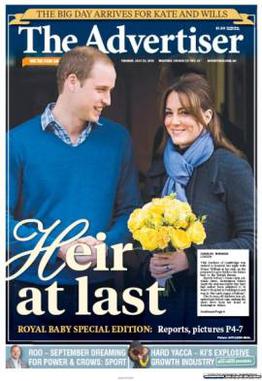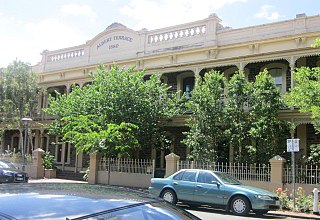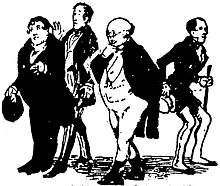
The Advertiser is a daily tabloid format newspaper based in the city of Adelaide, South Australia. First published as a broadsheet named The South Australian Advertiser on 12 July 1858, it is currently a tabloid printed from Monday to Saturday. The Advertiser came under the ownership of Keith Murdoch in the 1950s, and the full ownership of Rupert Murdoch in 1987. It is a publication of Advertiser Newspapers Pty Ltd (ADV), a subsidiary of News Corp Australia, itself a subsidiary of News Corp. Through much of the 20th century, The Advertiser was Adelaide's morning broadsheet, The News the afternoon tabloid, with The Sunday Mail covering weekend sport, and Messenger Newspapers community news. The head office was relocated from a former premises in King William Street, to a new News Corp office complex, known as Keith Murdoch House at 31 Waymouth Street.

Victoria Park / Pakapakanthi, also known as Park 16, is a park located in the Southeastern Park Lands of the South Australian capital of Adelaide. It is bordered by Fullarton Road, Greenhill Road, East Terrace and Wakefield Road. Before 1897 it was known as the Old Adelaide Racecourse.
South Australian Jockey Club is the principal race club in South Australia.
The Australian Association of Lyceum Clubs, formed in 1972 from several smaller clubs, is an Australian arts, literature and social activism group for women only. The aim of the AALC is to promote a spirit of goodwill and understanding within the Association and to enhance the enjoyment of Lyceum by providing opportunities for contact and friendship with members of other Lyceum Clubs. The first Lyceum Club was founded in London, England in 1904 by Constance Smedley.

Sampson Hosking was an Australian rules footballer who played for the Port Adelaide Football Club in the South Australian Football League (SAFL). He was twice a recipient of the Magarey Medal, an individual award given in recognition of being the best and fairest player in the SAFL. After his playing career Hosking was also an accomplished football coach successfully leading Port Adelaide and the West Torrens Football Club to a combined six premierships. In 1929 he was described in the Register as "one of the most prominent figures in the game during the past 20 years. Combining exceptional pace with a football brain of rare fertility".
Sir George Coutts Ligertwood (1888–1967), commonly referred to as G. C. Ligertwood, was a Judge of the Supreme Court of South Australia.

Carrington Street is a street in the south-eastern sector of the centre of Adelaide, South Australia. It runs east–west, from East Terrace to King William Street, blocked at Hutt Street and crossing Pulteney Street at Hurtle Square. It is one of the narrow streets of the Adelaide grid, at 1 chain wide.
The Adelaide Football Club, often referred to as the Old Adelaide Football Club, was an Australian rules football club based in Adelaide. Founded on 26 April 1860, it was the first football club formed in South Australia.

The Bunyip is a weekly newspaper, first printed on 5 September 1863, and originally published and printed in Gawler, South Australia. Its distribution area includes the Gawler, Barossa, Light, Playford, and Adelaide Plains areas. Along with The Murray Pioneer, The River News, and The Loxton News,The Bunyip was now owned by the Taylor Group of Newspapers and printed in Renmark.

The 1888 South Australian Football Association season was the 12th season of the top-level Australian rules football competition in South Australia. The Norwood Football Club won their 8th premiership by winning 1 premiership point, or a half a win, more than Port Adelaide.
The Adelaide Easel Club was a society for South Australian painters which broke away from the South Australian Society of Arts in 1892 and which re-merged with the parent organization in 1901.
Clive Melville Hambidge was a surveyor in the State of South Australia, remembered as a long-serving Surveyor General.
William Harcus was a Congregationalist minister in England and South Australia, where he later turned journalist and editor.

Spencer John Skipper was a journalist in South Australia who wrote and drew using the pseudonym "Hugh Kalyptus".
The Adelaide Liedertafel is a traditional German male choir, one of several Liedertafeln, or song societies, in the history of Adelaide and South Australia. It is Australia's oldest male choir.
South Australian Literary Societies' Union (1883–1926) was a peak or advocacy organisation of literary societies in South Australia. It organised competitions between the member societies and established a "Union Parliament" to debate issues of the day.
Henry Lewis Conran, generally known as H. L. Conran but Harry to his friends, was an Australian pastoralist and stockbroker.
The Commonwealth Club of Adelaide was a South Australian men's social club, whose members were mostly high-ranking officials, successful businessmen and professionals. The club never had rooms of its own, but met once a month for a catered lunch in one or other of Adelaide's large cafes or, for high-profile guest speakers, the Adelaide Town Hall. Meetings consisted mostly of talks by members or guest speakers, followed by discussions and socializing. As with most service clubs, talks and discussions were expected to be non-sectarian in religion and non-partisan in politics. The club was formed as a result of a meeting called for March 1910 at the Adelaide Town Hall by S. H. Skipper, a popular Adelaide barrister, and son of journalist Spencer Skipper.
Hammer & Co. was an Adelaide, South Australia, photographic business with a studio on Rundle Street.
Benjamin Hill Gillman was a traffic manager of South Australian Railways.







